There are laws regarding the airflow in confined spaces and moisture control in bathrooms, and the ducting used for the bathroom fans is similarly subject to building codes. Furthermore, of the allowable ducting, each has its own set of benefits and drawbacks.
There are two options when it comes to bathroom fan ducts: flexible and rigid.
We look at both options in this article. We also look at some other duct-related decisions you will have to make when installing your bathroom fans, including insulated or uninsulated, 4” or 6”, where to vent, and what fan to choose.

Flexible duct is easy to install and has a long lifespan, it is a common choice for bathroom fan ducting. A rigid duct will move air more efficiently and can be used over longer distances, but it is costly and hard to install. Insulated ducting (flexible or rigid) is always better than uninsulated.
Flexible Duct for Bathroom Fan
While not all of your home’s ventilation systems can use flexible duct (e.g., range hoods and dryers require smooth ducting), this product is perfectly acceptable to use for a bathroom fan.
As is true with every type of duct, there are benefits and drawbacks to using flexible ducting (the pros and cons for flexible ducts are discussed further down).
In the case of flexible ducting, the benefits are believed to outweigh the drawbacks in most situations, which is why flexible duct is so commonly used for this purpose.
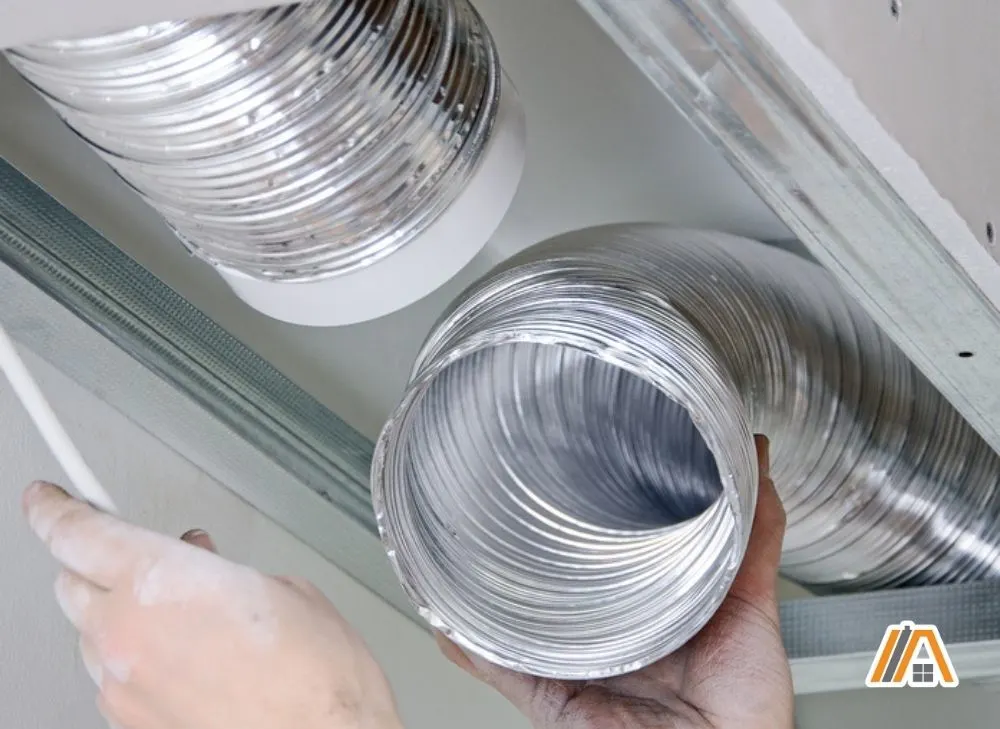
Now, it’s all well and good to say that flexible duct will do the job, but what does the building code say? In my experience, the internet is filled with advice that actually contradicts acceptable practice and legally-binding codes.
Flexible Duct for Bathroom Fan Approved by Code
Chapter 15 of the International Residential Code (IRC)
“is specific to exhaust systems related to clothes dryers, domestic cooking, toilet rooms, bathrooms and whole-house ventilation systems.”
Section M1504 discusses exhaust ducts and exhaust openings. While there is no line stating that you can use flexible duct, they include “flex duct” as a duct type in their table of allowable duct lengths.
This indicates that they can be used, although the run length is controlled to limit the issues that arise from using flexible ducting materials.
Flexible Duct Materials
The flexible ducts can be made from fiberglass, plastic, or metal. However, you should try to avoid cheap aluminum ducting because it tears very easily.
In fact, it’s very common for the thin aluminum duct to be damaged during installation. This is often discovered only when investigating the source of moisture damage in the attic years later.
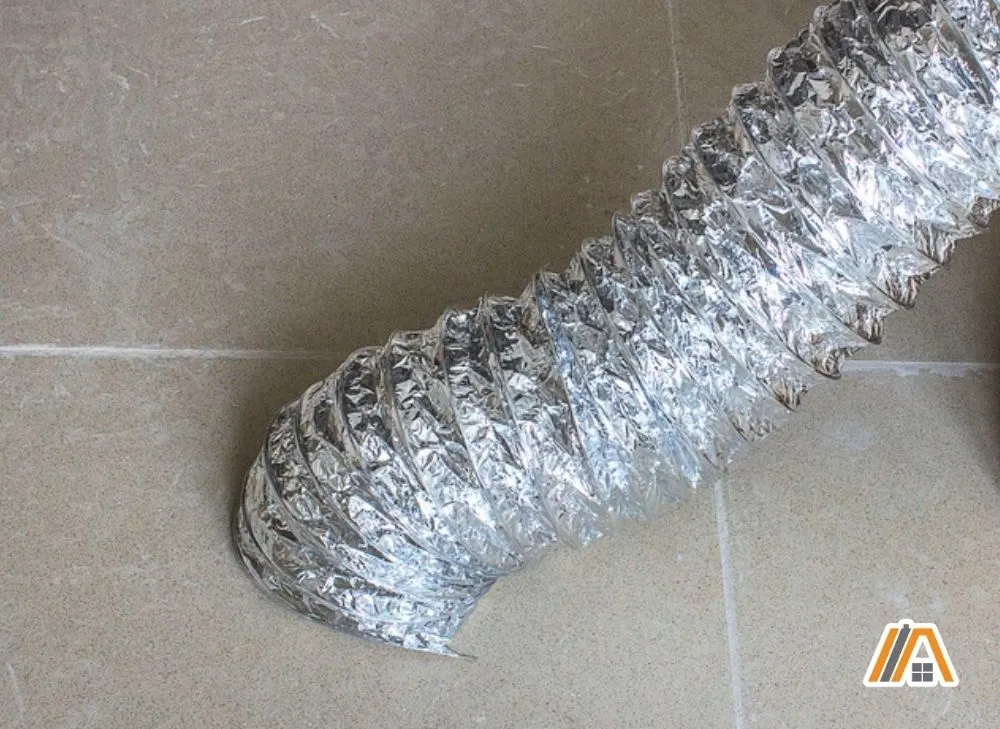
You can still use an aluminum duct, just look for something that has a protective layer on top of the thin metal.
PVC-covered aluminum flexible ducts are drastically more tear-resistant and are much easier to insulate and install since you don’t have to be so careful.
If you do wish to use aluminum ducting, then I recommend the heavy-duty AC Infinity Flexible Aluminum Ducting pictured below. It is reinforced with a four-layer design and is thus much more resistant to mechanical damage and the issues associated with duct wall breaches.
- Designed for ventilation applications including HVAC, dryer, grow rooms and tents.
- Four layer design makes it more durable and resistant to leaks, tears, and cuts.
- Steel-wire spiral structure is flexible and easy-to-install in hard to reach places.
- Constructed of Aluminum and thermoplastic, tube can be shortened for various applications.
Last update on 2024-03-27 / Affiliate links / Images from Amazon Product Advertising API
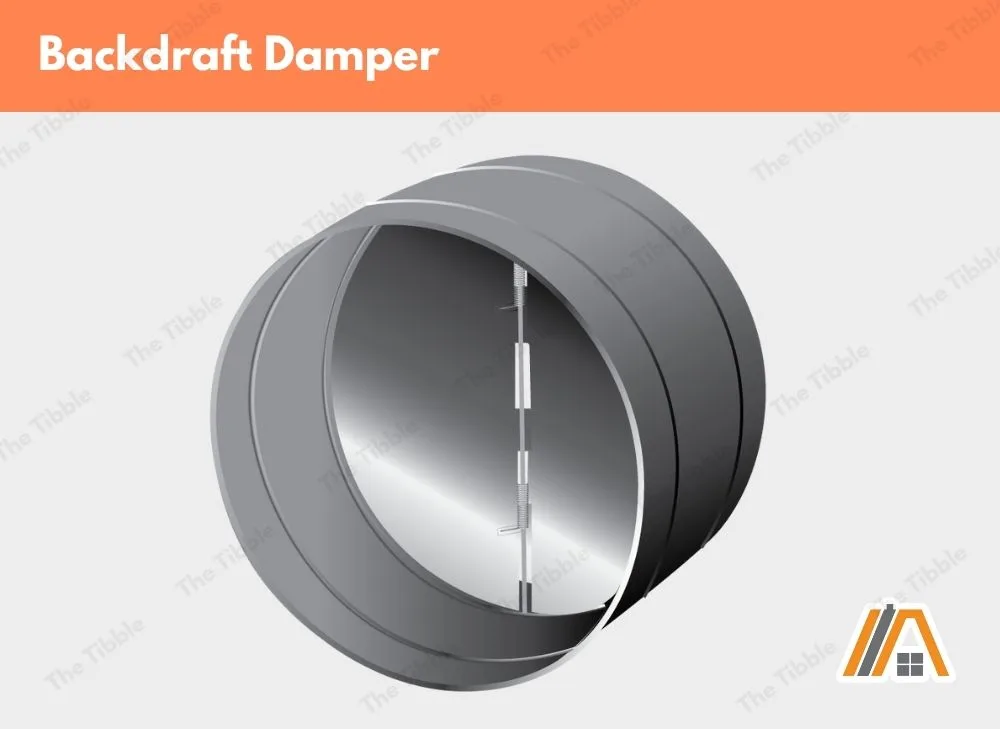
Backdraft dampers are crucial for ensuring that your bathroom ventilation system is operating properly, effectively, and without causing discomfort through drafts.
Now, let’s get into the benefits and drawbacks of flexible ducts.
Benefits of Flexible Duct for Bathroom Fan
Fits Through Smaller Openings
The flexibility of these ducts means that you can get them through smaller openings.
You don’t want to squash them inside a cavity as this will negatively affect the ventilation capabilities of the system.
But to actually get them into place, a small amount of compression or wiggling is possible and won’t cause any issues if you are careful and are not using the very fragile, uncoated aluminum versions.
Bends Are Easier to Achieve
Being able to manipulate the duct also allows you to bend it around corners and obstacles much more easily than rigid ducting.
The implications of this are two-fold.
Firstly, you don’t have to completely adjust your ducting course because of obstacles. You can run the system along the ideal pathway and just bend the ducts around obstructions to the straight path.
Take care not to compress the duct at the bend, however.
Secondly, turning corners does not involve cutting and fitting two lengths of ducting together with specialised connectors.
This saves time and money, but more importantly, the continuous curves mean that you have fewer weak points (joins are always weak points in ductwork).
The Bends Are Less Severe
When you reach a turning point in a duct run, the best way to approach it is to start the curve early and go with a less severe bend over a longer distance.
Now, the available space does not always allow this, but if it does, then flexible ducting is the option that allows you to take full advantage of the situation.
You can just bend the duct along the necessary angle for the desired length in order to achieve a gentle curve.
But what’s the point?
Well, your bathroom ventilation system relies on the presence of certain forces and the absence of other in order to function. You want forward velocity (provided by the fan) with as little friction as possible.
Bends increase friction in a significant way if they are too sharp.
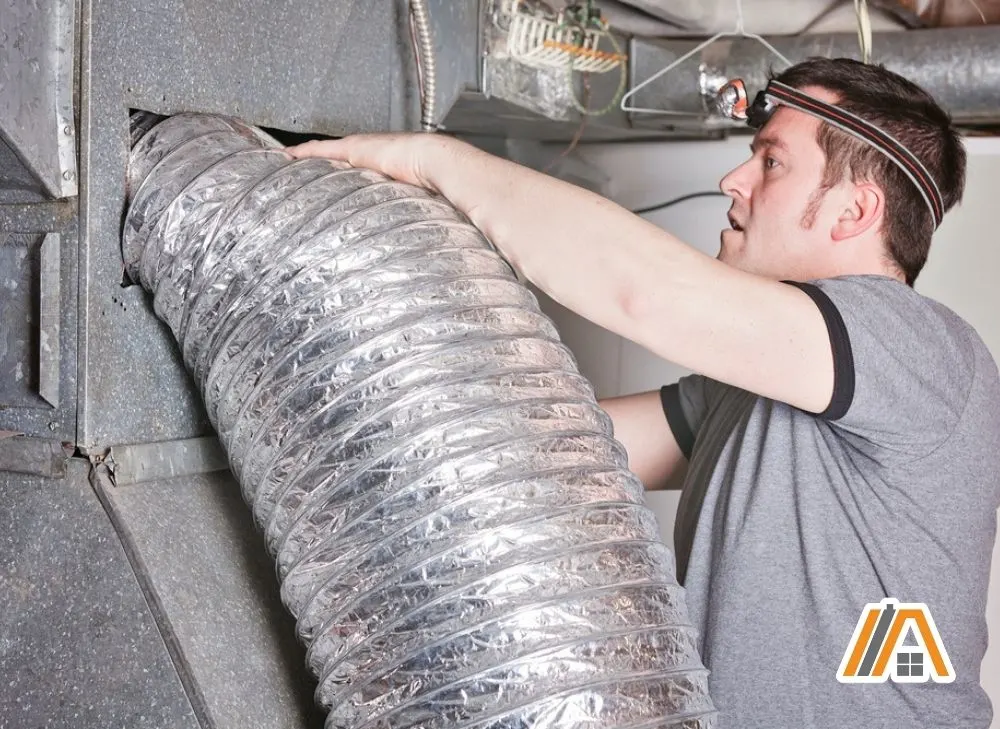
Air entering a sharp bend with hit against the duct wall, losing momentum to friction. It will have to overcome this friction (expending more energy) in order to change flow direction out of the bend.
When the air in the duct slows down, it may not have enough energy to make it out of the duct. The exhausted, moisture-laden bathroom air cools and condenses, leading to leaking vents.
Additionally, it will take longer for steam to leave your bathroom, allowing it to wreak the havoc you were trying to avoid by installing the bathroom fan in the first place.
Often the Cheapest Option
For many people, the most alluring aspect of flexible ducting for a bathroom fan is probably the cost. Even the higher quality flexible ducting is significantly less expensive than rigid metal ducting.
You save further on labor costs because it is easier and, therefore, cheaper to install, and you don’t have to buy the adaptors and joints required to create bends with rigid ducts.
Drawbacks of Flexible Duct for Bathroom Fan
The purpose of exhaust ducting in a bathroom is to carry the warm and moist air out of the bathroom and release it outside.
This prevents moisture from building up in the bathroom structures and surfaces and causing rot, mold, mildew, etc.
There are two factors whereby flexible ducting is not the most effective type of ducting for this purpose.
Increased Friction
The ridges found on the inner walls of flexible ducts create airflow turbulence. Turbulence increases the rate at which air particles collide with the walls of the ducts, thereby increasing friction.
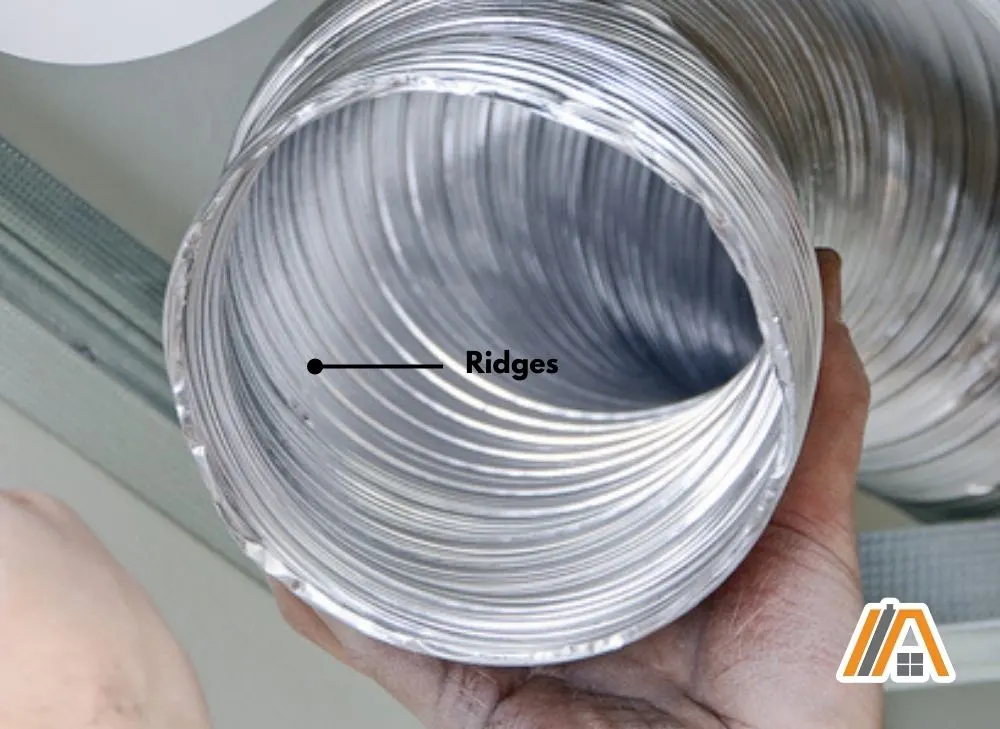
As mentioned, friction is one of the key factors influencing airflow pressure through a duct.
Duct pressure needs to be sufficient to keep the air and the moisture carried by the air moving through the duct until it is released outside.
When friction increases, it causes airflow pressure loss, and the efficiency of the duct is reduced.
Furthermore, the inner wall ridges can catch and hold moisture, preventing it from being taken outside, and the lower the airflow pressure, the easier it is for moisture to be deposited in the ducts.
While a flexible duct will increase friction in this regard, it’s generally nothing to be worried about.
The performance difference compared to rigid ducts is negligible, especially when using the
Sagging Duct
Flexible ducting can sag if it is not adequately supported.
The resultant sagging points further impede smooth airflow, increase friction, and cause pressure losses.
Just as the ridges of the ducts can catch and collect water that is meant to be exhausted outside, so too can the sagging sections. Moreover, the weight of the water makes the sagging worse.
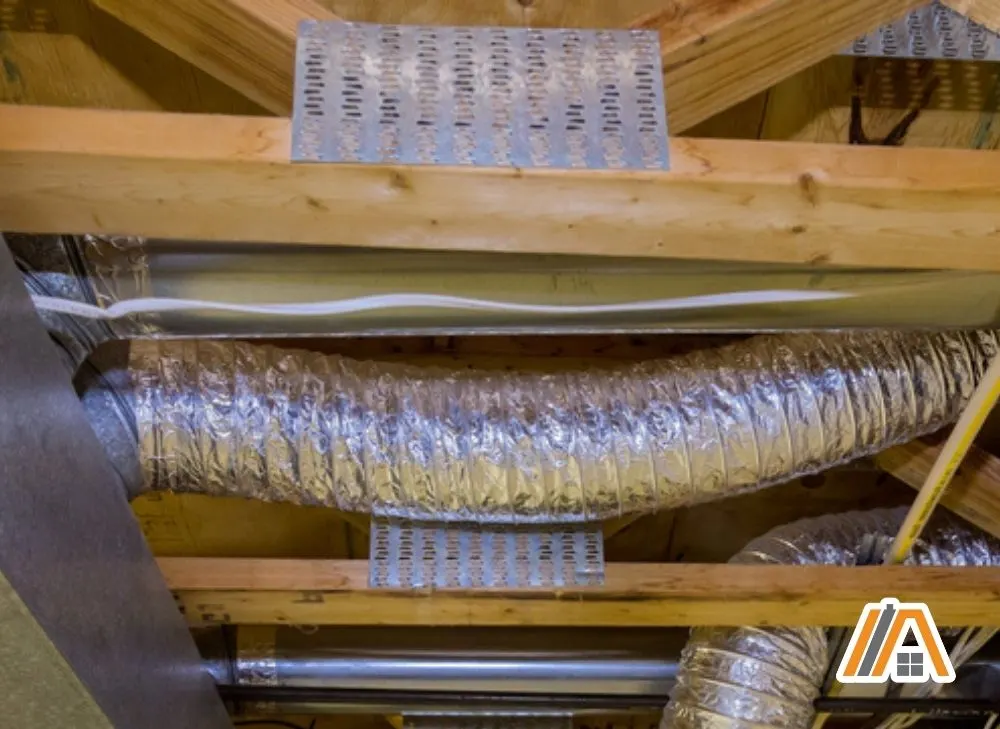
Not only that, but pooling water in a duct that carries hot air is a great environment for mold growth.
Increased Maintenance
The fact that moisture can build up in flexible ducts means that they require cleaning more often, making them relatively high maintenance.
They are also more easily perforated or compressed compared to rigid ducts, even if they are reinforced. This means that you have to check them for leaks more regularly.
Shorter Duct Runs
The ridged nature of flexible ducts and the loss of airflow velocity that comes with it means that there is more restriction of the length of the duct run between the fan and the external vent.
This can be limiting depending on where your bathroom is located in the house, the space available through which the duct can pass, and where you can/want the external vent to go.
Can You Use Insulated Flexi Duct for Bathroom Fan?
There are two ways to get insulated ducts. One way is to buy flexible ducting and then insulate it yourself. The other is to buy flexible ducting that has already been insulated.
In either case, using insulated ducting with bathroom fans is not only allowed, it is recommended.
Pre-insulated ducting is certainly the easier of the two options except when it comes to cutting the duct. In such cases, the uninsulated material is better.
Since leaving excess ducting curled up along the run has the potential to reduce the efficiency of the ventilation system or even make it non-compliant with building codes, cutting is not something that can be avoided.
Still, in some situations, the amount of cutting required is insufficient to warrant the extra effort of insulating the ducts yourself.
I recommend using an uninsulated PVC-covered duct, like the one sold by AC Infinity, and then insulating it using a cotton duct wrap. This will give a better end result.
- Insulates, cushions, and reduces vibrations on heating and AC ducts
- Safe alternative - no gloves, face Mask, or goggles needed
- Class a fire rating
- Provides maximum insulating power
Last update on 2024-03-27 / Affiliate links / Images from Amazon Product Advertising API
Rigid Duct for Bathroom Fan
Rigid ducts are the best choice for a bathroom fan in terms of performing the purpose of venting air and moisture from the bathroom.
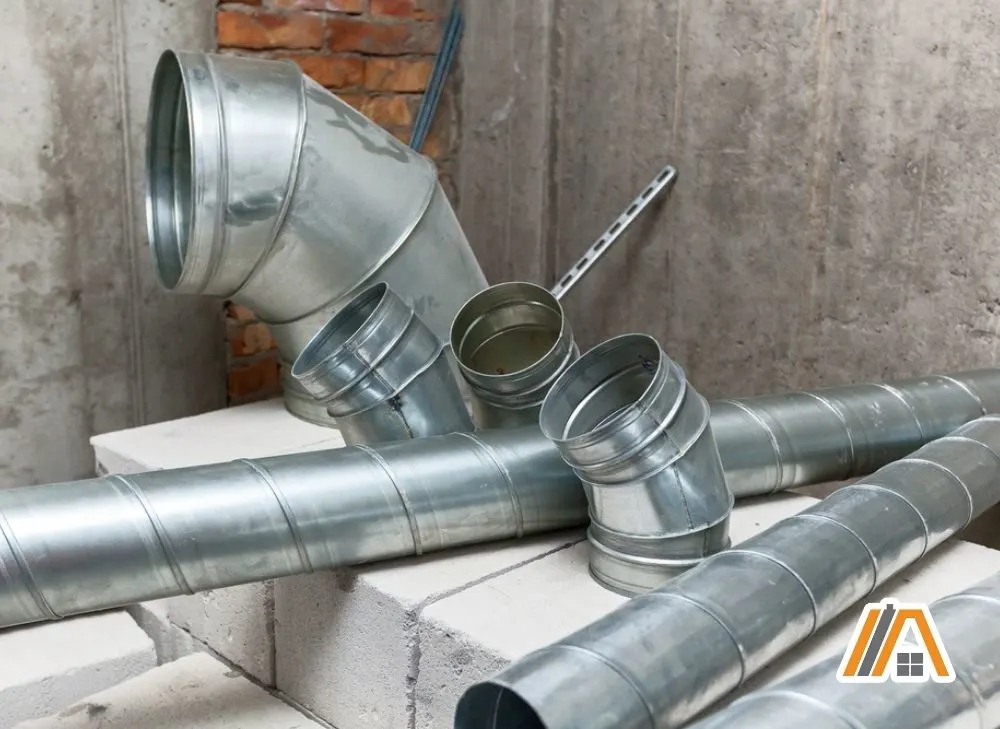
The reason why it is not the most commonly used ducting has to do with its drawbacks, which we will discuss in a moment.
First, let’s make sure that rigid ducting is legal to use for bathroom fans.
Rigid Duct for Bathroom Fan Approved by Code
As with flexible duct, there is no specific regulation in Section M1504 of the IRC stating that you can or can’t use rigid ducting for bathroom fans.
However, the code does include “smooth-wall duct” as a duct type in their table of allowable duct lengths.
Smooth-wall duct refers to rigid ducting because flexible ducting will always have the ridges created by the concertina design.
Benefits of Rigid Duct for Bathroom Fan
Smooth Inner Walls
Rigid ducting is typically made from sheets of stainless steel metal (although certain plastic ducting is considered to be rigid ducting), and so it has smooth inner walls.
The smooth walls create much less turbulence than the ridged walls of flexible ducting, so there is less pressure lost in rigid ducts.
There are also fewer places where moisture from the air can collect and build up in the ducts. This is only a problem by joins and elbows.
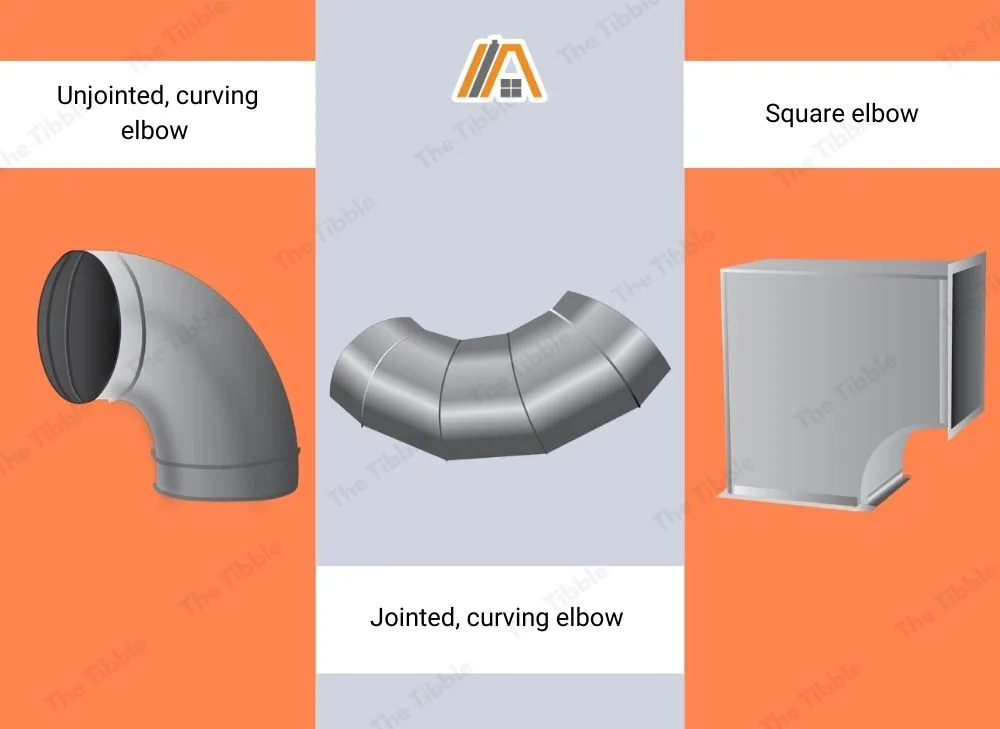
However, if you keep the number of elbows to a minimum and use curving joins instead of squared ones, then you can minimize the impact of these. Unjointed curves are better than jointed versions.
Less Susceptible to Damage
Rigid ducts are harder to perforate and compress, making them less susceptible to damage.
The metal is thicker than flexible ducting, meaning that more force is needed to break through the surface or deform the shape.
The durability of rigid ducting also gives them longevity.
Lower Maintenance
Rigid ducts are low maintenance. As there are fewer places for dirt and water to collect compared to flexible ducting, the rigid versions only require occasional cleaning.
You also don’t have to keep as close an eye on them for leaks.
You Can Have Longer Runs
Because rigid ducts experience less loss of airflow velocity due to their smooth inner surface, you can get away with longer duct runs.
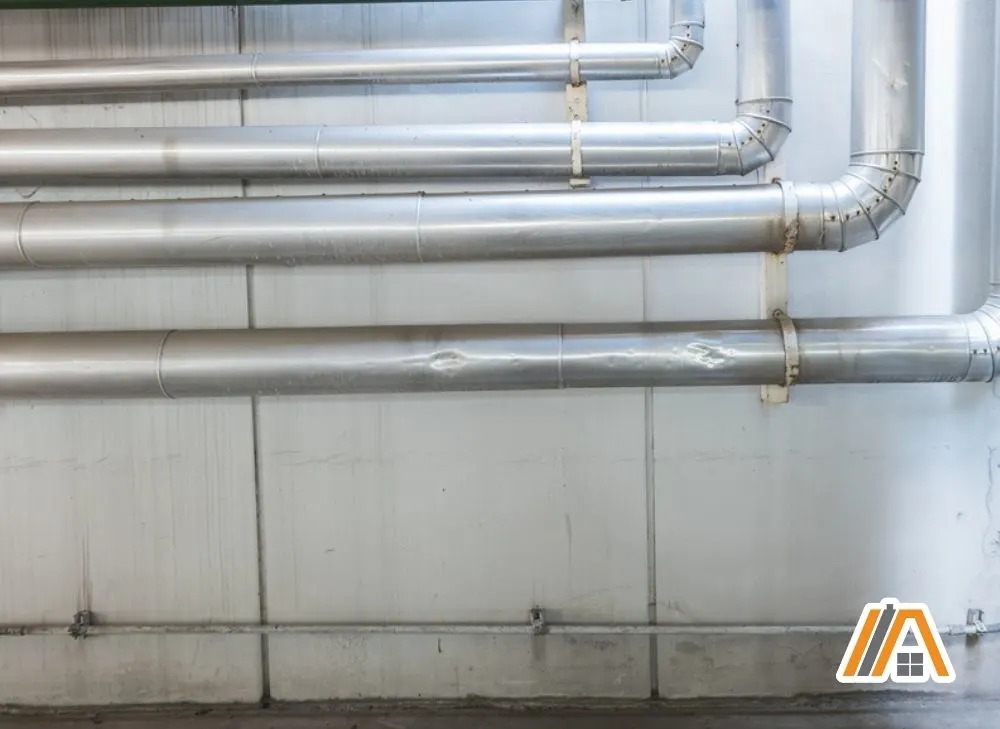
This is very helpful if your bathroom does not have one or more external wall or is not in close proximity to the roof (which is the best location for the external vent).
Drawbacks of Rigid Duct for Bathroom Fan
Expensive
Rigid ducting is more expensive to purchase, and if you are having it installed professionally, then the labor is also more expensive because it requires more specialized skills.
This is typically the most limiting factor; the reason why many people opt with the flexible option.
Difficult to Install
If you are going to try to install it yourself, you should be aware that it is quite challenging to do so.
Additionally, once it is installed, moving it is not simple, so you have to make sure that it is correctly installed the first time.
Rigid bathroom fan ducts can’t just bend or be placed around obstacles. You will have to insert elbows and joins to move around obstacles and turn corners. The more elbows and joins, the more turbulence is created.
Noise
A ventilation system exclusively made out of rigid ducts is going to be noisier when compared to flexible ducts.
The vibrations from noise created by the fan and, to a certain extent, noises from other rooms and even from outside is transferred by the continuous metal duct.
This is why in most cases, a short length of flexible duct is used between the fan and the rigid ducting and between the rigid ducting and the terminal vent.
The expense and the difficult installation are the two main drawbacks of rigid ducting, but if neither of these things deters you, then it is probably your best option.
Should I Use Insulated Duct for Bathroom Fan?
As mentioned, insulating your bathroom fan ducts is recommended.
Water will condense inside a non-insulated duct and eventually it will start dripping down from the bathroom fan.
Not only is the dripping annoying, but it will can also cause brown stains around the fan, which make your bathroom look dirty and old.
Furthermore, uninsulated ducts promote excess heat loss through the bathroom fan and can limit the effectiveness of the system.
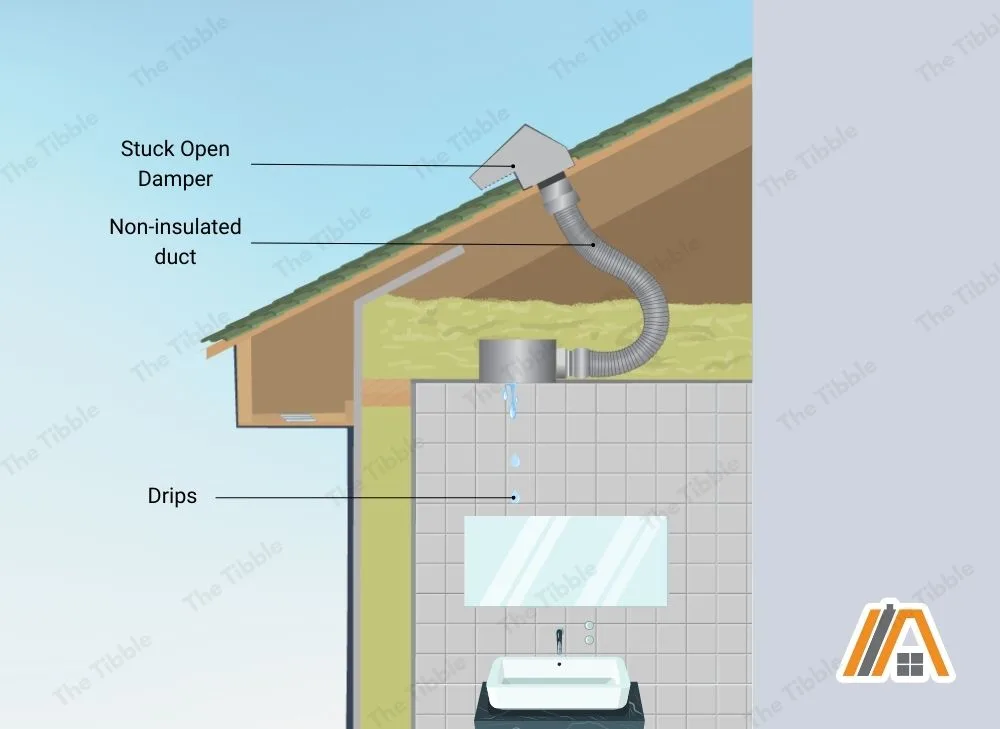
Don’t forget to place insulation above the fan to prevent heat loss.
4” or 6” Duct for Bathroom Fan
Duct size, typically either 4″ or 6″, depends on the bathroom fan capacity.
Installing a duct as big or bigger than the fan port is okay but avoid using adapters.
If the fan housing has a 6” connection, always use a 6” duct even if the fan comes with a 4” adapter.
If the duct length is over 25 ft, install 6” regardless of the fan.
How Far Can I Vent a Bathroom Fan?
The distance that you can vent a bathroom fan depends on the fan’s airflow rating, the duct diameter, and, as discussed, whether the duct is flexible or rigid.
You can check out my easy-to-use tables on duct lengths, which are based on the information provided by the IRC, to ensure that you never vent further than is allowable by the building codes.
Is It OK to Vent Bathroom Fan Through The Soffit?
While the final decision depends on each individual house, it is typically acceptable to vent a bathroom fan through the soffit.
If your roof already has a few holes through it, the soffit might be your best option.
The main benefits to venting a bathroom fan through the soffit are:
- It is sometimes the shortest route.
- You preserve the integrity of your roof.
- You significantly minimize the chance of back-drafting.
- It can help with room heat preservation.
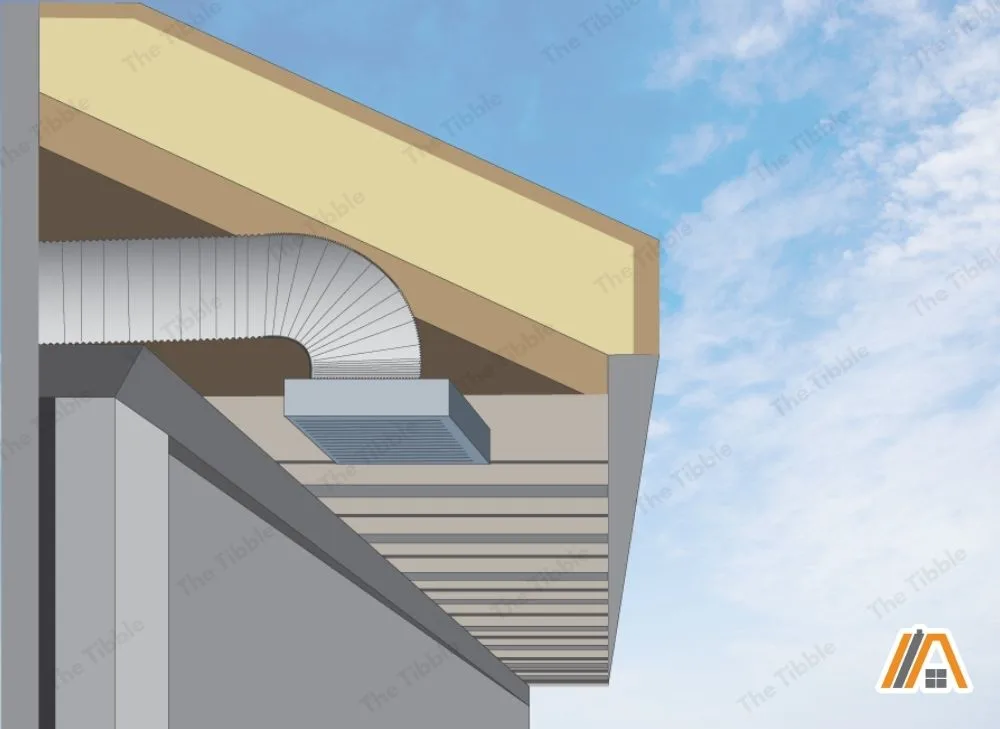
In order to make venting your bathroom fan through the soffit a viable choice, you have to choose the correct duct size, duct material, duct slope, ducting route, and insulation.
The installation has to be done correctly to prevent the warm and moist air from flowing back into the attic through the soffit.
Additionally, venting should only ever be done through the soffit and never into it.
Soffit Venting Sometimes a Bad Idea?
You should never vent a bathroom fan within 10 ft of a soffit air intake point. This defeats the purpose of venting the warm and moist air outside because it can easily be drawn back into the attic.
If you are seriously thinking about venting your bathroom fan through the soffit, you should first read this article that explains in detail the factors you need to consider when venting through the soffit.
Does a Bathroom Fan Need to Vent Outside?
It is a common query whether bathroom fans need to vent all the way outside. The answer has a very black and white answer: yes, always.
The purpose of bathroom fans is to remove moisture and bad odors from inside the bathroom so that mold and mildew do not grow.
Mold and mildew are not just ugly to look at. They are also hazardous to your health.
Mold and mildew are not the only problems. There is also the possibility of damage to the wood or metal structures in the home as well as the insulation and electrical wiring.
If you vent a bathroom fan into your attic, crawlspace, soffit, etc., then you are just moving the risks from your bathroom to that area.
In fact, it is such an essential condition of venting that it is stipulated in most building codes, including the IRC. In Section M1505.2, it says:
“Exhaust air from bathrooms and toilet rooms shall not be recirculated within a residence or circulated to another dwelling unit and shall be exhausted directly to the outdoors.”
Ductless bathroom fans are available on the market, but they will only create airflow in the room. They are incapable of removing moisture, which is the primary purpose of a bathroom fan.
How to Choose a Bathroom Fan
There is no shortage of bathroom fan options on the market today, and trying to choose the correct one for your bathroom can become rather overwhelming.
To guide you through making your decision easier, I have created a guide: 6 easy steps to find the right bathroom exhaust fan.
Here is a summary of the 6 helpful steps:
- Find the optimal CFM for the bathroom fan. CFM refers to cubic feet per minute, and it represents the airflow rate through the fan.
- Choose an optimal location.
- Choose a type of bathroom fan (ceiling mounted, wall-mounted, or inline).
- Measure cutout dimensions. This refers to the actual hole you are going to have in the ceiling or wall for your fan.
- Find out the duct size.
- Consider the noise level.
Then, once you have chosen your fan, you will need to decide how you would like it to be operated (unless you have a continuous ventilation bathroom fan).
You could go with a physical on/off switch, a timer switch, or a humidity sensor switch.
A bathroom fan and dryer cannot share the same outside duct. According to IRC’s Section M1502.2:
“Dryer exhaust systems shall be independent of all other systems and shall convey the moisture to the outdoors.”
So, unfortunately, you will have to vent your dryer and your bathroom fan separately.


